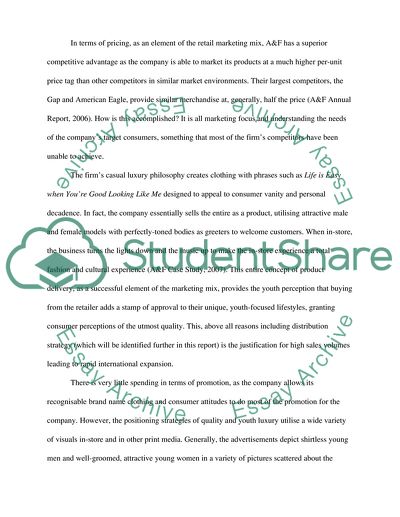Cite this document
(Retail Marketing and Logistics at Abercrombie & Fitch Case Study, n.d.)
Retail Marketing and Logistics at Abercrombie & Fitch Case Study. Retrieved from https://studentshare.org/marketing/1717284-retail-marketing-and-logistics
Retail Marketing and Logistics at Abercrombie & Fitch Case Study. Retrieved from https://studentshare.org/marketing/1717284-retail-marketing-and-logistics
(Retail Marketing and Logistics at Abercrombie & Fitch Case Study)
Retail Marketing and Logistics at Abercrombie & Fitch Case Study. https://studentshare.org/marketing/1717284-retail-marketing-and-logistics.
Retail Marketing and Logistics at Abercrombie & Fitch Case Study. https://studentshare.org/marketing/1717284-retail-marketing-and-logistics.
“Retail Marketing and Logistics at Abercrombie & Fitch Case Study”, n.d. https://studentshare.org/marketing/1717284-retail-marketing-and-logistics.


